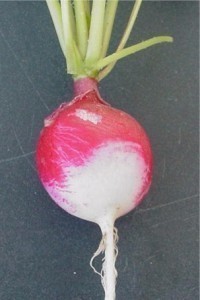Radish Dimensions
Radish is a root vegetable that is widely consumed  around the world. It was first found during the pre-Roman times and Europe. Today, it is being grown all over the world.
around the world. It was first found during the pre-Roman times and Europe. Today, it is being grown all over the world.
Like any other vegetable, radishes grow differently, depending on the variety and some other factors. That’s why there are also different radish dimensions.
Radish Varieties
Categorically speaking, there are four main varieties of radishes; one each for summer, spring, winter, and fall. Those four types are further classified according to size, color, and shape.
Summer radishes are generally small. They are cultivated within three to four weeks.
Spring radishes, meanwhile, come in a variety shapes, color, size, and even flavor. They are also known as European radishes and are planted in a cooler weather. Some of the radish varieties of this type include the April Cross, which is a giant white radish; Cherry Belle, which is a red and round radish; Champion, which is almost similar to a Cherry Belle but grows a root that’s about 5 centimeters; Icicle, which is a carrot-shaped radish that grows between 10 and 12 centimeters.
Winter radishes also have a different set of characteristics. There’s the black radish also known as the Black Spanish. It is characterized by a black skin and a white flesh that is hot-flavored. The black radish may be round or pear-shaped and grows about 10 centimeters in diameter. The Daikon is also a winter radish and is commonly grown in East Asia. There are many varieties of Daikon that exists but the most popular is the Sakurajima, which is a white radish that has a hot flavor and typically grows between 10 to 30 kilograms.
Radishes that are harvested during fall are normally radish seedpods. They are left to grow past the harvest season. The Rat-tailed radish is specifically characterized by thin, long, and curly pods that grow about 20 centimeters in length.
Nutritious and Useful
Radishes are rich in nutrients. They are packed with ascorbic acid, potassium, and folic acid. They are also good sources of Vitamin B6, magnesium, copper, calcium, and riboflavin.
Radishes also have a variety of uses. They are great additions to certain recipes. The whole plant is edible but the part that is often consumed is the bulb of the radish. It may be eaten raw and could add significant flavor to salads.
Radishes are also widely used as an alternative medicine. They are often suggested to treat cough, gastric discomfort, constipation, and arthritis among others.





